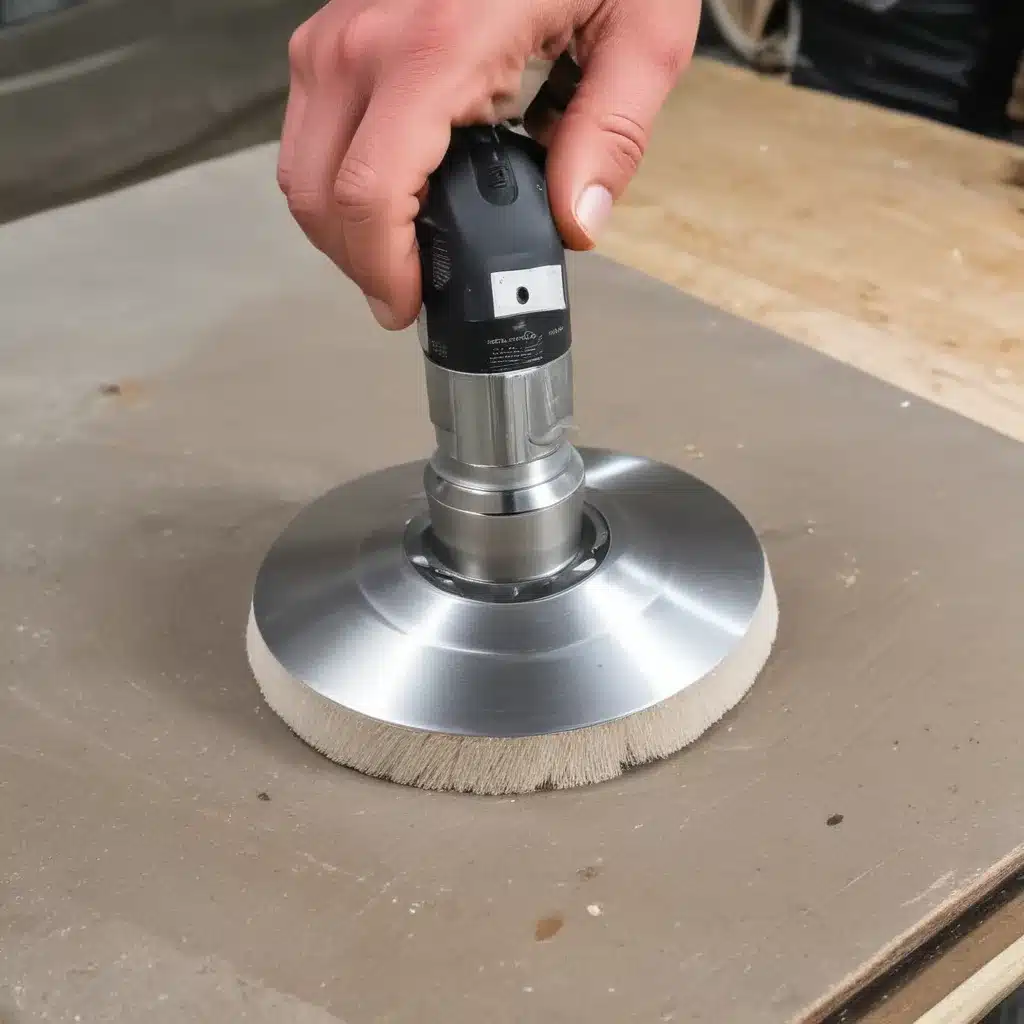Unleashing the Mirror Shine: Mastering the Art of Stainless Steel Polishing
You know what they say, “the best way to a person’s heart is through their stomach.” But let’s be honest, the real way to capture someone’s attention these days is by making their kitchen appliances and cookware sparkle like diamonds. And when it comes to achieving that mirror-like finish, stainless steel is the way to go.
As the proud owner of Adam’s Cleaning Services in Nottingham, I’ve seen my fair share of dull, dingy stainless steel surfaces. But fear not, my friends, for I am here to share the secrets of the stainless steel polishing trade. Buckle up, because we’re about to embark on a journey towards the pinnacle of shine.
The Cleaning Conundrum
It all starts with a good old-fashioned cleaning. You can’t expect to polish a piece of stainless steel if it’s caked in grime and residue. As the wise YouTube tutorial suggests, we need to start with a clean slate.
Now, I know what you’re thinking, “But Adam, I’ve tried cleaning my stainless steel before, and it just doesn’t seem to get that shiny finish I’m after.” Well, my friend, that’s where you’re missing a crucial step. You see, it’s not just about scrubbing away the dirt and grime – it’s about prepping the surface for the real magic to happen.
First, you’ll want to use a mild detergent, like good old dish soap, and a clean sponge to gently clean the surface. Don’t be afraid to get in there and really scrub away any sticky spots or stubborn residue. Just be sure to avoid using anything too abrasive, like steel wool, as that could do more harm than good.
Once you’ve got that squeaky-clean surface, it’s time to move on to the next step: buffing.
The Buffing Bonanza
Ah, buffing – the key to unlocking that mirror-like shine. Now, I know what you’re thinking, “Buffing? That sounds like a lot of work.” And you’d be right, my friend. Buffing stainless steel is no easy feat, but trust me, it’s worth it.
As the experts at Empire Abrasives suggest, you’ll want to start with sandpaper in the 150-240 grit range. Yep, that’s right, sandpaper. But don’t worry, we’re not talking about the kind of sandpaper you’d use to refinish a table. This is the good stuff, designed specifically for the delicate task of buffing stainless steel.
Now, you might be tempted to just grab a power sander and go to town, but hold your horses. Slow and steady wins the race when it comes to buffing stainless steel. You’ll want to keep your sander between 4,000 and 6,500 RPMs and be sure to move it at a 90-degree angle to any noticeable scratches. Trust me, the extra effort is worth it when you see the results.
Once you’ve got that satin-smooth finish, it’s time to move on to the final step: polishing.
The Polishing Prowess
Ah, the grand finale – polishing. This is where the real magic happens, my friends. And let me tell you, it’s not as simple as just slapping on some polish and calling it a day.
As the helpful video explains, there’s a specific process to polishing stainless steel to perfection. First, you’ll want to clear away any excess buffing compound or debris left behind. Then, it’s time to break out the big guns – a quality stainless steel polish and a polishing wheel or buffing pad.
Now, you might be tempted to just go to town with the polish, but slow down there, partner. You’ll want to work in small, circular motions, just like waxing a car. And don’t forget to wipe away any excess polish when you’re done – you don’t want to leave any streaks or unsightly residue.
Whether you’re using a power tool or doing it by hand, the end result should be a dazzling, mirror-like finish that will have your kitchen shining brighter than the sun. And let me tell you, there’s nothing quite like the feeling of seeing your own reflection in the flawless surface of your stainless steel appliances.
The Stainless Steel Showdown
Now, I know what you’re thinking – “This all sounds great, Adam, but what about the different finishes? How do I know which one to choose?”
Well, my friends, that’s a great question. As the Amazon experts so eloquently explain, there are a few different options to consider:
| Finish | Description |
|---|---|
| Matte | A basic repair that works for pieces that don’t need to be shiny or attractive, but require some work to repair pitting and gouges. |
| Brushed | A common finish, especially for kitchens and spaces that see a lot of light. It offers shine without the blinding reflection. |
| Mirror | The pinnacle of shine, masking any imperfections and making your stainless steel pieces look like they just rolled off the assembly line. |
Now, the choice is ultimately up to you, my friends. But let me tell you, there’s nothing quite like the satisfaction of seeing your stainless steel pieces gleam with that mirror-like finish. It’s like a work of art, and you get to be the artist.
So, what are you waiting for? Grab your cleaning supplies, your buffing tools, and your polishing compounds, and let’s get to work. Because when it comes to stainless steel, the only limit is your imagination (and your elbow grease).







